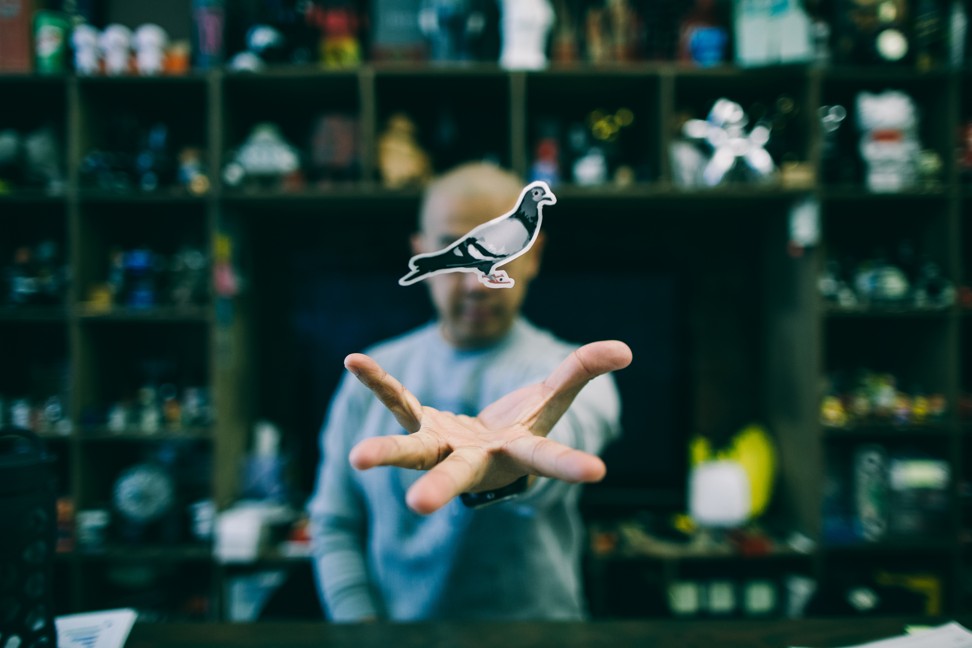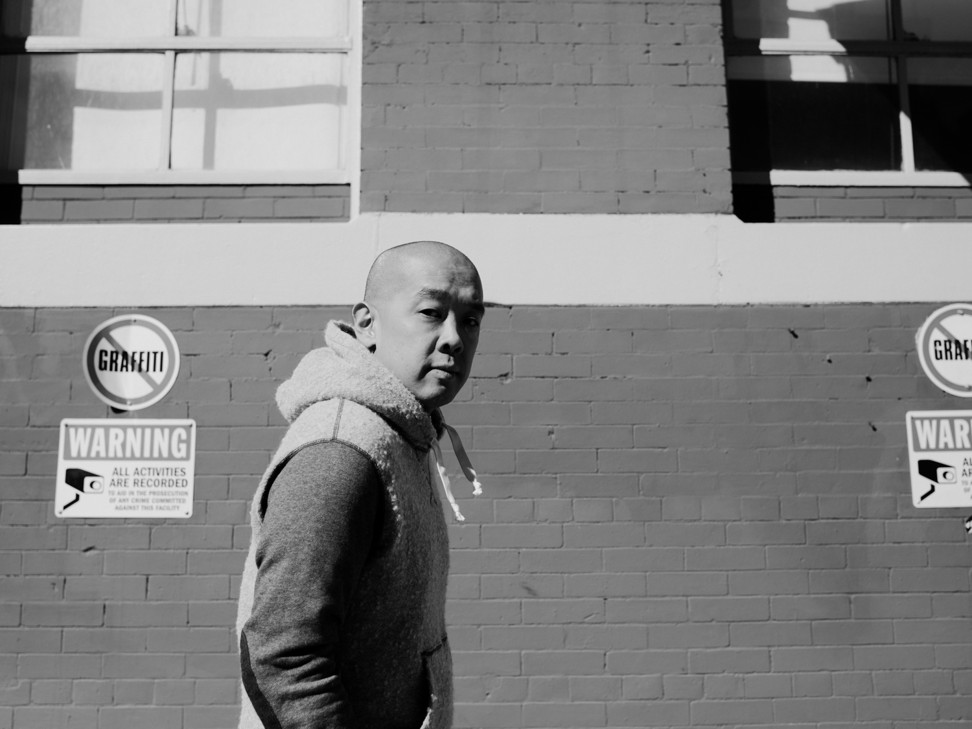
The Asian-American streetwear legend who helped Nike change sneaker culture
- Staple Design’s Jeff Staple caused a ‘riot’ on the streets of New York with his sneaker collaboration with Nike back in 2005
- Staple has been at the forefront of streetwear ever since and is credited with sparking the hyped sneaker culture
The first thing you’ll notice about Jeff Staple is his lack of ego. It’s a reminder that the original sneakerhead and streetwear guru has always gone against the grain in his 22-year – and counting – career.
“I’ve consistently been in the minority,” he explains from his expansive, light-filled studio that hides in a nondescript building in Soho, a bustling New York City neighbourhood.
“Growing up Asian in New Jersey I was a minority; going to college and meeting Asians who actually grew up in Asia, I was a minority. Then, when I got into hip hop and started attending open mic nights, I was often the sole Asian in the crowd. Starting my own urban brand, I was in the minority again – it’s just how it’s always been,” he says.
Such isolation could, understandably for many, manifest as anger or bitterness, but for Staple it’s been instrumental in shaping the kind of leader and entrepreneur he wanted to be: “I’ve never been ashamed of my background, but I haven’t wanted it to be the first thing that defines me, either,” he elaborates.

“I don’t want to have a good brand ‘for a Chinese person’, I just want to be good, period. When I first started out there were a few, very pro-Asian streetwear brands who used lots of lanterns and red dragons, but that was never my thing.”
He’s always been happy, he adds, for people to discover his heritage as a first-generation American with immigrant roots, “without forcing the Chinese card on them”.
Why founder of the Chinese Hypebeast thinks next global streetwear wave will begin in China
Yet, operating without a blueprint, the story of Staple’s success is now the undeniable epitome of the immigrant-American dream.
On March 7, 1997, he walked into a store wearing a T-shirt he had silk-screen printed in his spare time. It was his birthday, and he got chatting with the store manager who admired his tee. He walked out with an order to deliver 12 similar ones to sell on the shop floor – and the rest, as the saying goes, is history.
Staple Design was founded within the same year (“I had no ... way to process payment for all the shirts”), and he launched an all-encompassing, seasonal menswear collection and full-service creative agency to boot.
Today, he continues to run both in tandem, in addition to overseeing a seemingly endless slew of collaborations (think Shake Shack, Coca-Cola, Fila Originals). He is also the creative director of TGS Holdings’s group of retail outlets, which includes the much talked-about New York store Extra Butter.
Somewhere in-between it all, he also manages to find time to host Hypebeast Radio’s weekly Business of Hype podcast. “I guess it’s pretty renegade for a college dropout when you think about it,” he laughs. “At the start, though, I just thought it was cool to be able to make some money.”
Staple was born Jeff Ng, but chose the name Staple for himself and his brand as an ode to the foundational elements of life and the core products that we all need. “I wanted to make a brand that was about things that were already in your wardrobe – the essential bits,” he says.

In the first week of operation his company logo was a bowl of rice, before he settled on the now iconic pigeon which has served as the brand mascot – and an emblem of downtown New York street culture – ever since. Its notoriety was aided, in no small part, by a breakout collaboration with Nike in 2005, which is largely cited as the jumping-off point for hyped sneaker culture as it currently exists.
The story goes that crowds began to gather outside Staple’s now-closed Lower East Side store, Reed Space, four days before the launch of the Nike SB Dunk “Pigeon”, which he designed in grey, white, and orange to mimic the feathers of its nakesame.
Come market day, the crowd had swollen to such a size that there was a riot which ultimately culminated in SWAT teams being alerted and NYPD officials escorting those lucky enough to score one of the 20 limited edition pairs home to safety. (“I was fearful at times,” Staple can be heard saying in a CBS News clip from the era.)
I keep about 200 pairs of sneakers in my home on rotation, and then about another 3,000 plus pairs in a facility in New Jersey. It’s all filed and organised beautifully.
Today, bids for original “Pigeons” start as high as US$22,728 on live market place, StockX, but Staple – in typically modest fashion – gives credit for the shoe’s popularity to Nike. “People think Nike are great because of performance and innovation, but really they’re the best at selling you a story. The shoe, then, is merely a token of that story,” he says.
“I think the next generation is buying into stories even more than the previous one. The mix of content, editorial and commerce is already happening – and I think it’s what’s going to shape the future, too. The culture of reselling is evidence of that.
“To say that this shoe is worth 20 per cent below retail and this shoe is worth 300 per cent above, when they’re both pieces of leather stitched together with cotton and rubber underneath, is really just about a perceived value. One story was told in a meaningful way that resonates, and the other doesn’t hold.”

Staple’s personal collection of sneakers is less modest and better imagined as a museum of street culture – which is exactly what he hopes to turn it into.
“My style is very simple, which I think comes from being the kind of person that’s pretty happy behind the scenes,” he says. “Rarely will I go full peacock, except for my shoes. I’m so vain when it comes to my feet. As soon as I see someone else wearing the same style as me, I retire them immediately.
Japanese street style guru Hiroshi Fujiwara on the joy of being a jack of all trades
“I keep about 200 pairs of sneakers in my home on rotation, and then about another 3,000 plus pairs in a facility in New Jersey. It’s all filed and organised beautifully.”
Staple’s archive also holds around 10,000 streetwear T-shirts from different brands, and the first Nike Air Prestos that Virgil Abloh designed for Off-White.
“It’s a very prized shoe and a beautiful piece of product design that I still appreciate because of what it meant to the culture at the time. I’ll never wear it, but I am saving it,” he says.
In the future, Staple is planning to reopen Reed Space as the next innovation in retail experience and – perhaps you’ve guessed it – storytelling. “I don’t want to give away the secret sauce,” he teases, “but we’re constantly on the lookout for the perfect location for it.
“When we opened in 2001, it was one of the first multi-genre lifestyle boutiques of its time. There was us and Colette in Paris – that was it. I want to open it [Reed Space] in a whole new way and draw a line in the sand where we say: this is what retail will look like a decade from now. To me, what I’m aiming for is to always occupy the future.”
